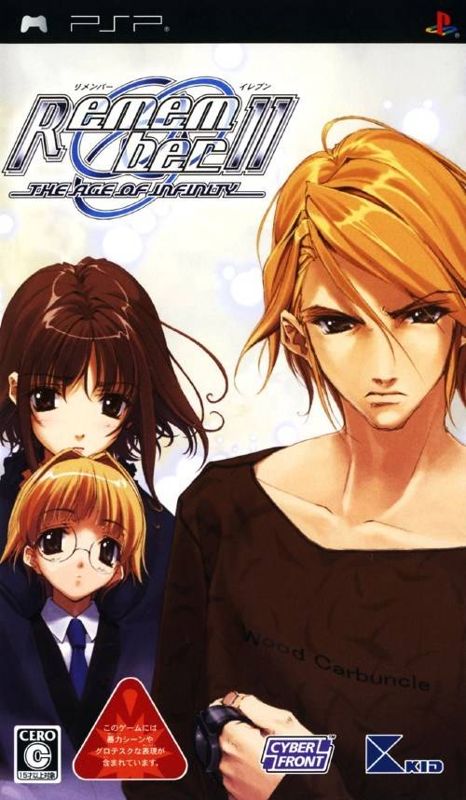Retro Replay Review
Gameplay
Remember11: The Age of Infinity embraces the classic visual novel format, where the bulk of interaction comes from reading well-crafted dialogue and narrative passages punctuated by meaningful decision points. Each choice you make can send the story down an entirely new branch, eventually leading to one of 33 possible endings. This structure ensures that players who enjoy unraveling complex scenarios and hunting for hidden paths will find themselves repeatedly diving back into the game to explore every narrative avenue.
(HEY YOU!! We hope you enjoy! We try not to run ads. So basically, this is a very expensive hobby running this site. Please consider joining us for updates, forums, and more. Network w/ us to make some cash or friends while retro gaming, and you can win some free retro games for posting. Okay, carry on 👍)
A standout mechanic in Remember11 is the “personality transportation” system. Early on, you experience events through Kokoro Fuyukawa’s perspective, only to later switch consciousness with Satoru, a man trapped in the psychiatric hospital. This dual viewpoint not only keeps the plot fresh and unpredictable, but also offers varied context on the same events—deepening your understanding of each character’s motivations. Engaging with the game’s decision trees feels especially satisfying when you realize a choice made as Kokoro can ripple forward to alter Satoru’s storyline.
Accessibility-wise, the interface strikes a fine balance between simplicity and functionality. Auto-advance, text skip, and log features let you breeze through already-read dialogue, which is crucial for replaying multiple routes. The save system supports multiple slots and quick saves, so you can bookmark critical decision points without fear of losing progress. Whether you’re a visual novel veteran or dipping your toes into the genre for the first time, the pacing and tools on offer make navigation and experimentation both intuitive and enjoyable.
Graphics
The visual presentation in Remember11 is a strong suit, with character designs that capture the subtle emotional shifts inherent in a psychological thriller. Kokoro, Satoru, Keiko, and the supporting cast all exhibit expressive facial animations that convey everything from fear and confusion in the snowy mountains to tense unease in the dimly lit hospital corridors. Background artwork varies from stark, snow-swept landscapes to claustrophobic ward interiors, reinforcing the game’s chilling atmosphere.
Notably, the Superlite 2000 budget re-release bolstered the original roster of art assets with seven new CG sequences and several previously unreleased illustrations. These additional visuals not only boost replay value for returning players, but also enrich key storytelling moments—such as the first personality swap or the climactic revelations at the hospital. The fresh CGs are seamlessly integrated, appearing at pivotal junctures that heighten emotional impact and add color to the branching narratives.
Technical performance is solid on modern systems: transitions are smooth, artwork loads promptly, and there are no noticeable frame-rate dips or glitches. The color palette skillfully shifts to mirror the tone of each scene, whether bathed in cold blues to emphasize isolation or warmer hues during flashbacks that hint at happier times. Overall, the graphics successfully immerse players in Remember11’s tense, mind-bending world.
Story
At its core, Remember11 boasts a gripping premise: Kokoro Fuyukawa is charged with escorting Keiko Inubushi—a patient with Dissociative Identity Disorder, infamous for a deadly hospital incident—to a remote psychiatric facility. The sudden plane crash strands Kokoro, Keiko, and two other survivors in harsh mountain conditions, setting the stage for the game’s signature supernatural twist: mind-swapping between Kokoro and Satoru, a man trapped back at the hospital.
This dual-narrative device amplifies suspense and uncertainty, as you piece together clues from both perspectives. Gameplay alternates between Kokoro’s survival ordeal in freezing temperatures and Satoru’s struggle to understand why the hospital seems both familiar and inexplicably changed. Each route peels back layers of the overarching mystery—about identity, guilt, and the nature of consciousness—culminating in multiple revelations that challenge your assumptions.
The narrative depth is furthered by the sheer number of endings: with 33 possible conclusions, only two of which are deemed “good,” players are encouraged to explore missteps, dead ends, and unauthorized detours. This design not only boosts replayability, but reinforces the game’s themes: even small choices can have far-reaching consequences when human lives, and minds, hang in the balance.
Overall Experience
Remember11: The Age of Infinity stands out as a masterfully woven psychological thriller in the visual novel genre. Its unique personality transportation mechanic, bolstered by a branching narrative with dozens of endings, provides a compelling reason to revisit the story multiple times. Each playthrough reveals fresh layers of intrigue, making the game feel both expansive and tightly constructed.
The blend of hauntingly beautiful CG artwork and atmospheric backgrounds further immerses you in the game’s icy wilderness and eerie hospital setting. The Superlite 2000 re-release’s additional illustrations add tangible value, giving players new scenes to discover and admire. Coupled with a user-friendly interface that respects your time and reading pace, Remember11 offers a polished, frustration-free experience.
If you’re drawn to complex storylines, character-driven mysteries, and the thrill of unraveling every possible outcome, Remember11 is a title worth your attention. While the heavy reading and sometimes slow burn may not suit those seeking nonstop action, fans of cerebral, choice-driven narratives will find themselves engrossed from start to finish. This game is an excellent pick for anyone who values storytelling depth and high replayability in their visual novel adventures.
 Retro Replay Retro Replay gaming reviews, news, emulation, geek stuff and more!
Retro Replay Retro Replay gaming reviews, news, emulation, geek stuff and more!




Reviews
There are no reviews yet.